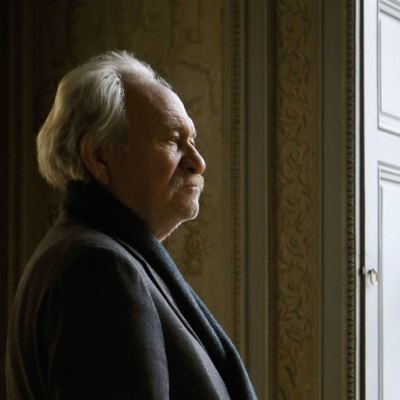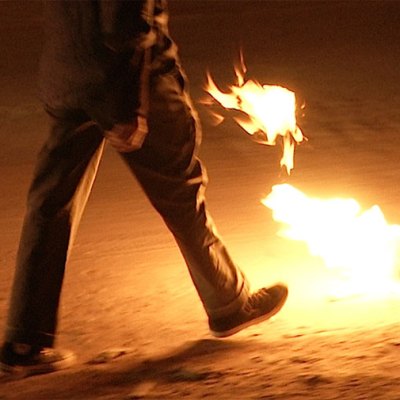Aguascalientes has grand aspirations. Best known for its natural hot springs and vineyards, this small city in the north of Mexico is aiming to be the next destination on the international art circuit. Buoyed by an ambitious governor, Carlos Lozano de la Torre, the city secured 825 million pesos (approximately £33 million) in federal funds for the construction of MECA (Macro Espacio para la Cultura y las Artes). This 86 hectare regeneration project saw the transformation of a derelict railway yard into three new museums, an art school, print studio, hospital, concert hall and library. Not bad going for a city with a population of just one million.
Photo: courtesy Macro Espacio para la Cultura y las Artes (MECA)
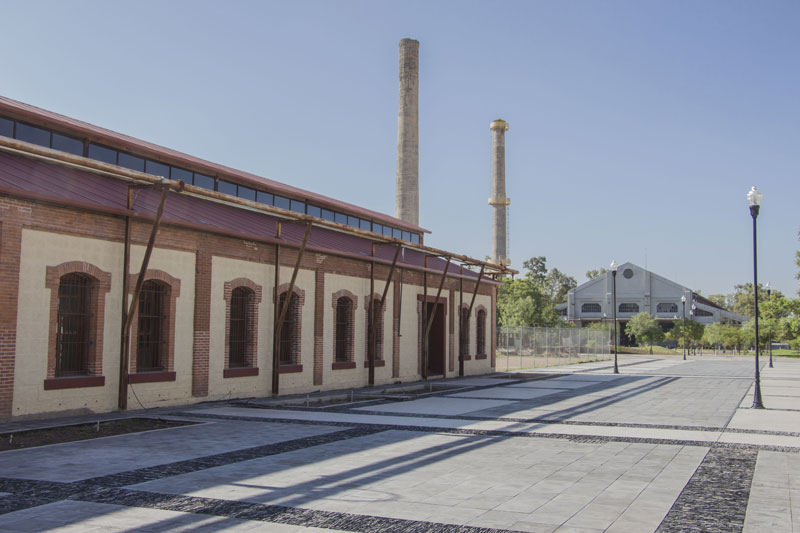
MECA has been styled as a site of cultural pilgrimage for local people and international visitors alike. Ambitions are particularly high for the Museo Espacio, the contemporary art gallery at the heart of the complex, which focuses on exhibitions by high calibre international artists. The building’s former industrial functions are reflected in its brick surfaces and steel rafters, with glass panels in the floor highlighting the train tracks which ran through the original yard. Designed by local municipal architects, this raw aesthetic is redolent of contemporary art spaces such as the Met’s new home in the Breuer building in New York or the Tate Tanks in London, which the Museo Espacio is trying to emulate.
Museo Espacio opened in February with a site-specific installation by legendary Arte Povera artist Jannis Kounellis, which employed materials found among the construction sites of the new development. Dulce María Rivas Godoy, director of the Aguascalientes Cultural Institute, explained that Kounellis has donated this work to the museum, making it the first in a nascent permanent collection. Interestingly, while international press were invited to the inaugural exhibition, the formal press trip took place later, coinciding with the opening of the second display by French artist Daniel Buren. The reasons for this were never fully explained – perhaps it gave the administration a chance to do a dry run.
Installation view of Como un juego de niño (Like a child´s play) (21 July–2 October). © 2016 Daniel Buren / ADAGP, Paris/Artists Rights Society (ARS), New York. Courtesy Museo Espacio. Photo: Beto Gutierrez
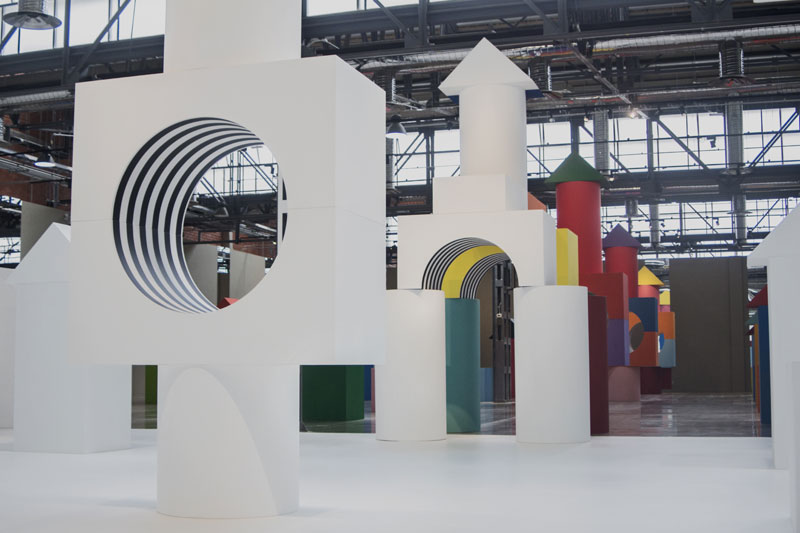
Part of a generation of conceptual artists who came of age in the late ’60s and ’70s, Buren first found fame for inserting the familiar striped motif found on cloth used by French street vendors into everyday locations in Paris. Often characterised as a pioneer of institutional critique, his work is less directly political than that label might suggest. Instead, Buren is more interested in disrupting the ‘objectivity’ claimed by museums, which he achieved by inserting the ephemera of street life into the white cube.
For this exhibition, Buren has reprised his installation Como un juego de niño, (Like child’s play), which was previously shown at the Museum MADRE in Naples and at the Museum of Modern and Contemporary Art in Strasbourg. One half of the gallery is filled with colourful geometric objects and mirrored walls, which face a white-painted space containing the same modular shapes painted entirely white. The division of space into colour and its absence creates a surreal effect, reminiscent of being down the rabbit-hole with Alice in Wonderland. Co-opting classical forms such as the obelisk and pediment, Buren establishes a series of elegant views throughout the galleries, opening with an exquisite enfilade that leads the eye from the entrance across the entire space. The only disappointing aspect of this giant playground is that these building blocks are not interactive. The emphasis is firmly on optical illusions rather than sensory encounters.
Photo: courtesy Macro Espacio para la Cultura y las Artes (MECA)
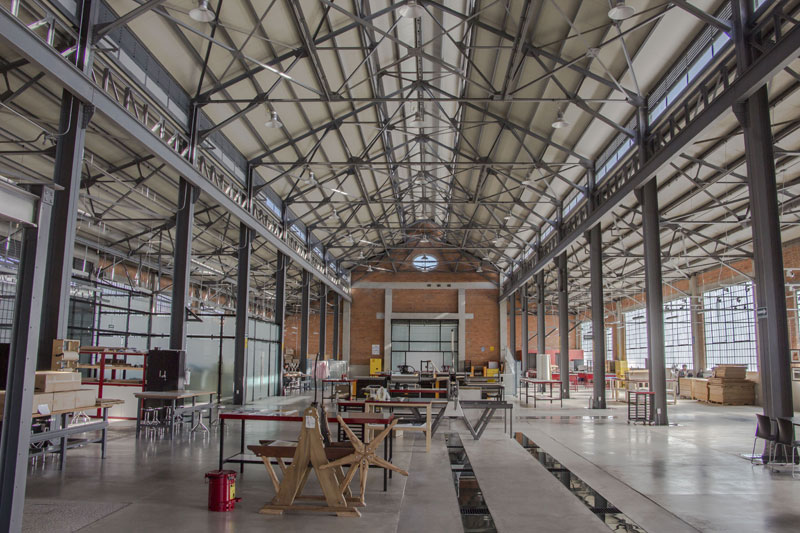
During the course of our visit it emerged that it was Buren’s dealer, Hilario Galguera, who introduced both Kounellis and Buren to the museum’s administration. Such collaborations are not unusual – the relationship between commercial galleries and European and American institutions can be just as close – but it was particularly apparent here, with Galguera even giving a tour. The museum’s next exhibition will be curated by international uber-curator Nicolas Bourriaud, so it appears that Espacio will continue to rely on programming advice from external partners for the time being. It will need to demonstrate greater curatorial independence in future if it is to garner critical acclaim from its international peers.
It is heartening to see the museum’s efforts to connect with the international art community, but I was left with lingering concerns about the long-term viability of the complex. At the end of his term (in a few months time) the governor will step down and, with him, the museum administration – though the core staff will remain in place. Attempts to enshrine the museum’s resources in Congress are ongoing, so while the institution could go from strength to strength, its current reliance on political goodwill means an uncertain future.
Installation view of Como un juego de niño (Like a child´s play) (21 July–2 October). © 2016 Daniel Buren / ADAGP, Paris/Artists Rights Society (ARS), New York. Courtesy Museo Espacio. Photo: Beto Gutierrez
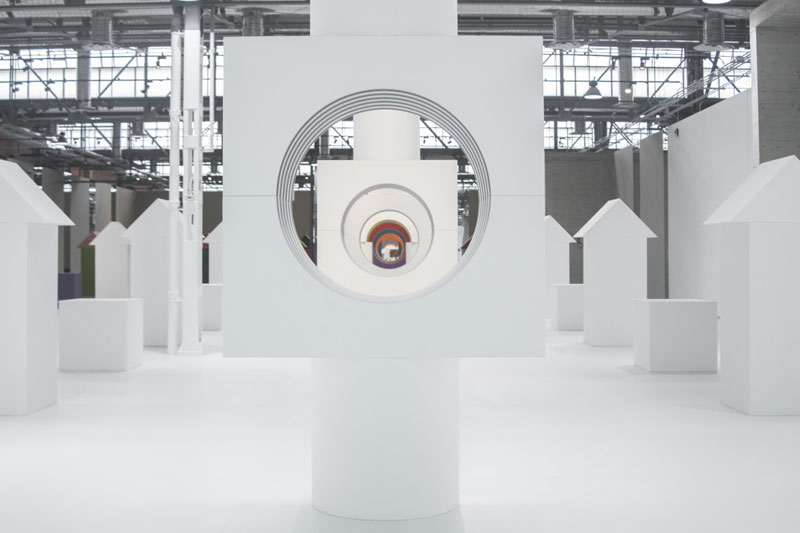
‘Daniel Buren: Como un juego de niño (Like a child’s play)’ is at the Museo Espacio, Aguascalientes, until 2 October.

